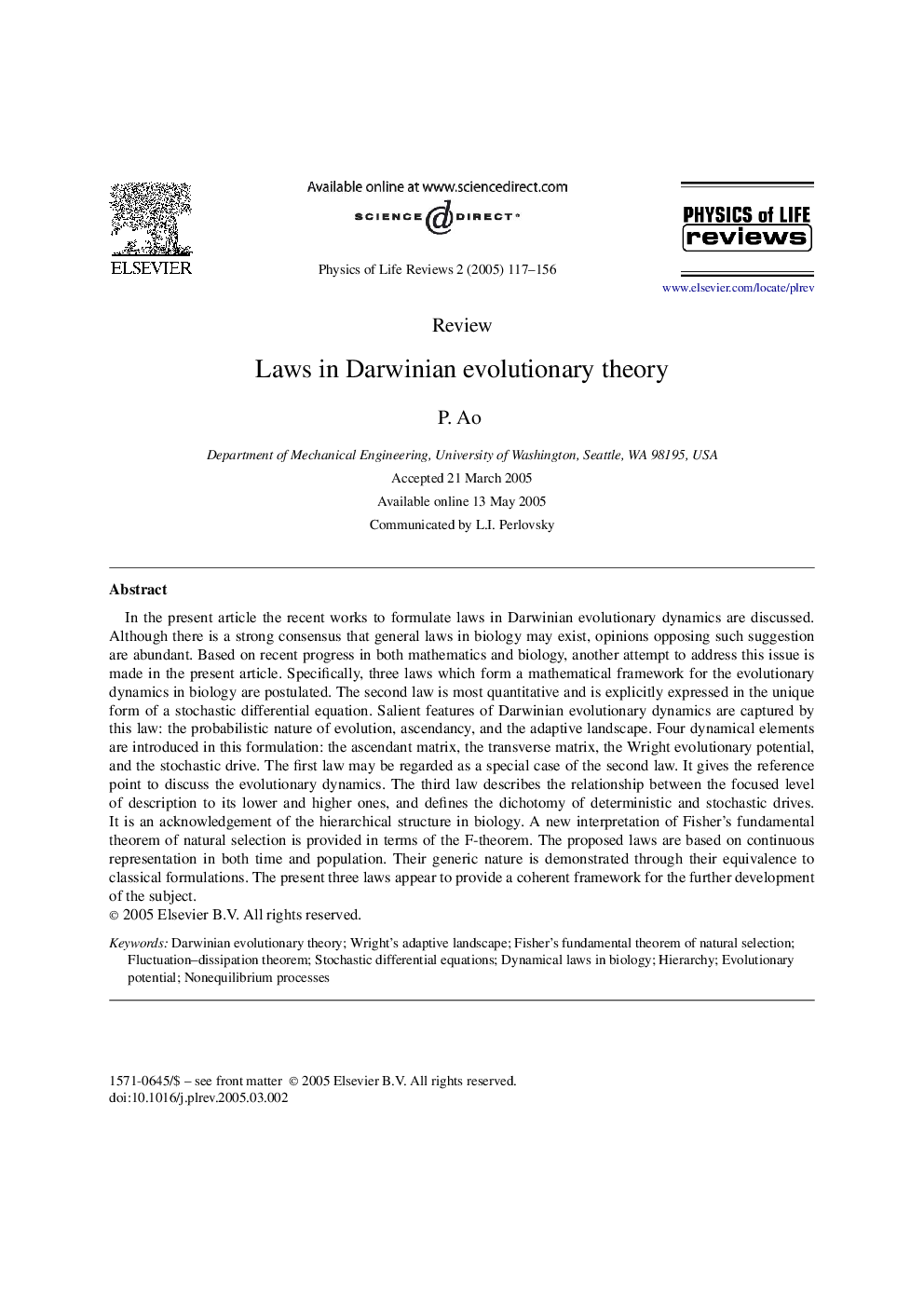| Article ID | Journal | Published Year | Pages | File Type |
|---|---|---|---|---|
| 9871272 | Physics of Life Reviews | 2005 | 40 Pages |
Abstract
In the present article the recent works to formulate laws in Darwinian evolutionary dynamics are discussed. Although there is a strong consensus that general laws in biology may exist, opinions opposing such suggestion are abundant. Based on recent progress in both mathematics and biology, another attempt to address this issue is made in the present article. Specifically, three laws which form a mathematical framework for the evolutionary dynamics in biology are postulated. The second law is most quantitative and is explicitly expressed in the unique form of a stochastic differential equation. Salient features of Darwinian evolutionary dynamics are captured by this law: the probabilistic nature of evolution, ascendancy, and the adaptive landscape. Four dynamical elements are introduced in this formulation: the ascendant matrix, the transverse matrix, the Wright evolutionary potential, and the stochastic drive. The first law may be regarded as a special case of the second law. It gives the reference point to discuss the evolutionary dynamics. The third law describes the relationship between the focused level of description to its lower and higher ones, and defines the dichotomy of deterministic and stochastic drives. It is an acknowledgement of the hierarchical structure in biology. A new interpretation of Fisher's fundamental theorem of natural selection is provided in terms of the F-theorem. The proposed laws are based on continuous representation in both time and population. Their generic nature is demonstrated through their equivalence to classical formulations. The present three laws appear to provide a coherent framework for the further development of the subject.
Keywords
Related Topics
Physical Sciences and Engineering
Physics and Astronomy
Physics and Astronomy (General)
Authors
P. Ao,
